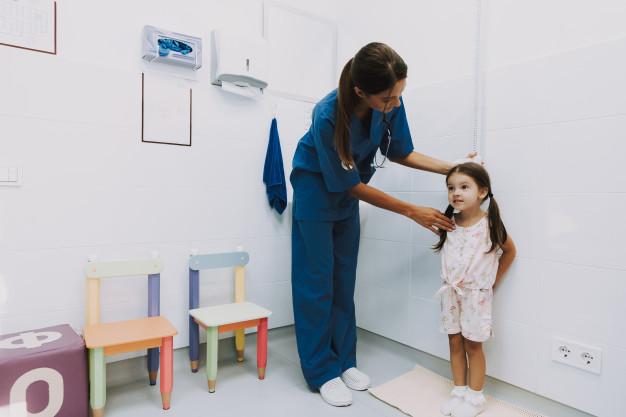Top 5 Ways to Make Your Pediatric Waiting Room Fun

Index Of The Blog

Doctor’s visits can be scary for kids. The process is often a whole new experience, and they are usually there because they are sick or in need of a vaccine. Put yourself in a kid’s shoes: Imagine sitting in a drab beige waiting room. Nothing is on the walls except an outdated landscape from the 80s in an ugly frame. Your palms are sweating because you know you will soon face a thin, sharp needle for your Chickenpox inoculation. The only thing to read is a used-and-abused Highlights magazine with all the pictures in the image search already circled.
No kid should have to go through that.
Whether you are a pediatrician in Algonquin or a pediatrician in Lakeland, children’s clinics have the potential to build fun and creative space without many limitations. It’s a major perk when your main clientele is toddlers and teenagers. To make their pediatric visit a comfortable—and even fun—experience, use these design tips to spruce up your waiting room.
Lighting
Nobody likes fluorescent lighting, yet many offices use bright lights to save on cost. If your goal is to create an inviting office space, then ridding your waiting room of harsh blue lights is a must. Often these types of lights can cause a flicker, which can potentially be dangerous to some patients. This obnoxious flickering can even cause migraines and seizures among those with sensitivities. The high blue brightness can also induce a stress response and put children in a cranky mood. Instead, offices should utilize natural light. If your space doesn’t have many windows, then purchase lamps and low light bulbs that mimic the sun’s warm rays.
Colorful, Engaging Design
What pediatricians might not realize is a room designed for kids can still appeal to adults. Take British designer Morag Myerscough’s design at Sheffield Children’s Hospital in northern England. She designed over 40 suites on the children’s wing of the hospital. Her colorful patterns take away the sterile, cold feeling of most hospitals and instead create a comfortable, home-like space. In Myerscough’s design, most of the medical equipment hides behind the shelving. Waiting rooms do not have to worry about disguising medical equipment, but it would be worth it to pull this idea into the exam room. This way, kids are not intimidated by machinery and medical tools.
Another tip is to consider designing your office with a particular theme. Building an area around an idea will help you determine what to incorporate into the space.
Interactive Games
Most pediatricians recommend limiting screen time. Children under the age of 2 should not have any screen time, while kids older than that shouldn’t have more than two hours per day. This being the case, it’s contradictory for pediatricians to incorporate screens into their waiting rooms. Luckily some healthy alternatives will keep kids preoccupied before their exam. Various projection game companies, for example, turn the floor or walls into interactive games. Digital projections encourage problem-solving, collaboration, and physical activity. These games are a healthy way to relax children before their appointments and because they are hands-free, projection games are more sanitary than tangible toys. Traditional games, books, and magazines are also a great option, even if they require more maintenance.
Fun Furniture
Children’s furniture should not forgo comfort. You want kids to feel welcome, engaged, and relaxed. Playscapes is a design firm that builds waiting room areas and furniture specifically for healthcare facilities. They developed wall mazes, storage, and shelving units that appeal to the younger crowd. They have moon-themed chairs, movable furniture that fits together like a puzzle, as well as sensory material like an arched star footbridge. All of their products are durable, safe, and fun.
Don’t Neglect Teenagers
It is easier to design for kids who are far less picky about what they enjoy and instead simply appreciate fun games and colors. That being said, pediatric offices should remember that half of their patients are too old for blocks and Legos.
Boex is a company out of the UK that designs remarkable spaces for children and teens with illnesses and disabilities. One of the company’s designs incorporates a textured wall that changes patterns with LED lighting. They built out a ball pool and comfortable resting places. In the bathroom, vinyl walls and water graphics change with LED lights as well. The effect creates a sensory experience that one may encounter in an art museum. The company shows that a kid-focused space can still be beautiful for kids of all ages.
No matter if you are a pediatrician in Highland Park or pediatrician in Radford, waiting rooms can enhance the overall experience at your practice. Consider these tips to help create an engaging space your young patients will love throughout their formative years.













